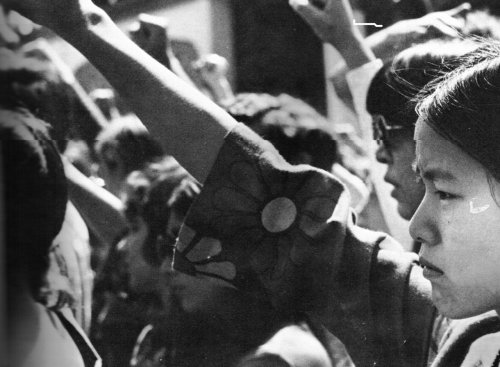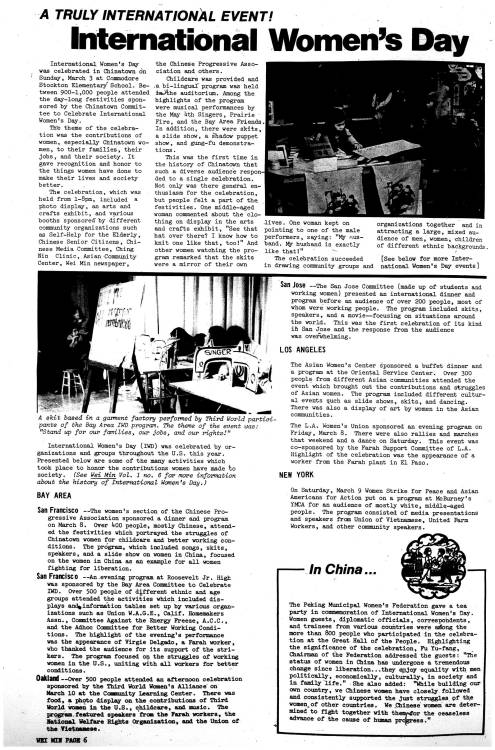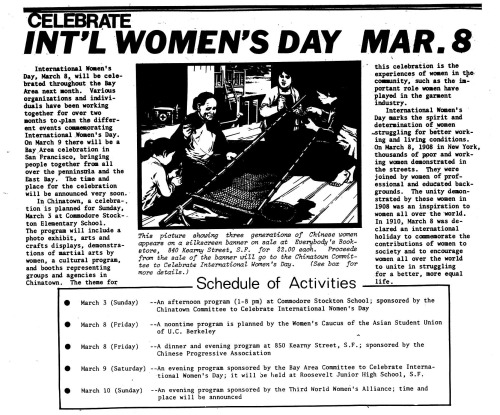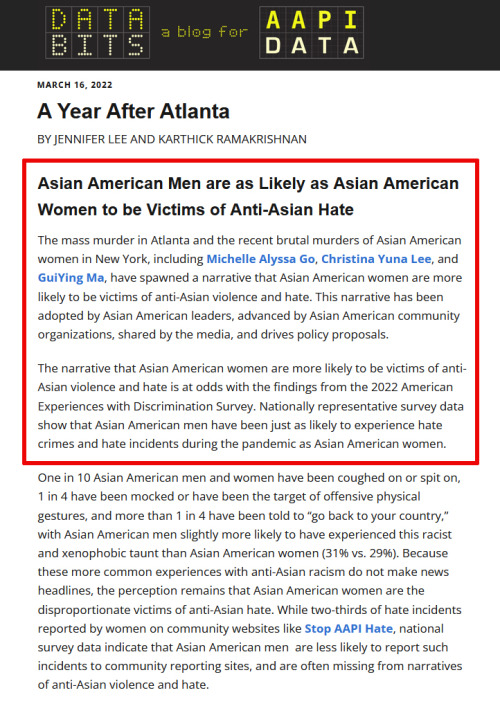#asian american women
1968, Asian American high school students attend the Black Panther Party funeral rally for Bobby Hutton,16 years old BPP member.
Now that’s what I’m talking about!
Photo by Nikki Arai (who also took the famous photo of Richard Aoki). On April 12, 1968, Oakland High students walked out to attend the memorial rally. Bobby Hutton was killed by OPD on April 6, 1968, two days after the assassination of Martin Luther King, Jr.
Post link
Wei Min Bao, March 1974
Happy International Women’s Day!
“The theme of the celebration was the contributions of women, especially Chinatown women, to their families, their jobs, and their society.”
Post link
Things don’t look good for Asian American women on #AAPIEqualPay day: http://www.yomyomf.com/asian-american-women-should-get-angry-about-being-underpaid/
Post link
The mainstream media narrative about anti-Asian hate crimes consistently erases Asian men as victims. So when AAPI Data—a well-known source of reputable stats—acknowledged this issue in March, I felt validated for the first time, and decided to find out what went wrong.
Is the erasure of Asian men in anti-Asian hate crime narratives occurring during data collection, analysis, or interpretation by mainstream media? The answer is that deep-seated bias against Asian men is present at all three levels of the process, causing harm along the way.
The reports I read came from a variety of sources: AAPI Data (national surveys), Stop AAPI Hate (community reporting), hate crime statistics (national law enforcement data), and articles and reports from Asian academics and journalists. I focused on these four reports in particular.
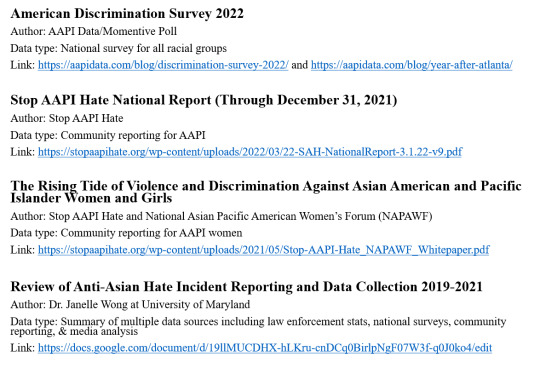
Here’s what I found. National survey data (AAPI Data) is considered more reliable than community reporting (Stop AAPI Hate), yet mainstream Asian-led media has relied heavily on Stop AAPI Hate data. Which might not be so bad—if Stop AAPI Hate didn’t show several signs of bias.
Stop AAPI Hate has pushed a media narrative that East Asian women are at the highest risk of physical assault. Yet their most recent national report and survey of AAPI women show that Asian men, enbies, and South Asian women are the most likely to experience physical assault.
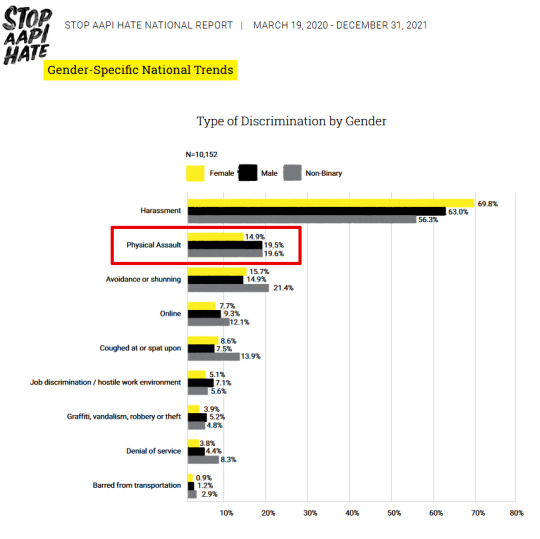
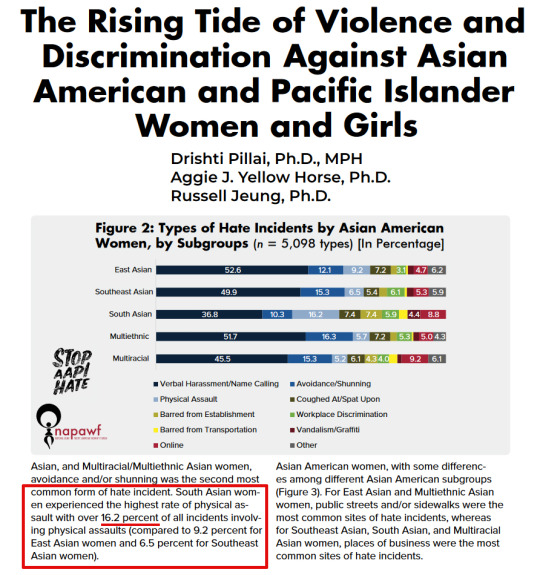
Stop AAPI Hate has also pushed the narrative that Asian women are uniquely targeted because of their gender. Yet in both their national report and survey of AAPI women, victims of all genders overwhelmingly attribute these hate incidents to race & ethnicity, not gender.
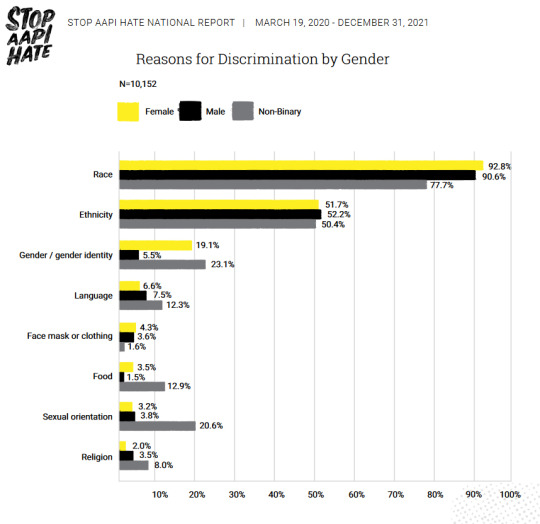

The omission of Asian men from the narrative of anti-Asian hate crimes is more glaring when Dr. Janelle Wong’s report shows that there’s evidence—even before 2021—that Asian men report violent incidents more often, self-report to community organizations less, and get less media coverage.
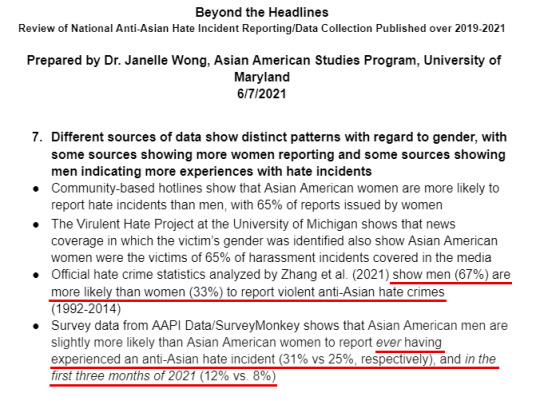
It seems Stop AAPI Hate suffers from two major problems: 1) it ignores important patterns in its own data if it doesn’t validate a narrative centering East Asian women, which 2) suggests a biased over-prioritization of EA women in outreach efforts—which impacts self-reporting.
Additionally, Stop AAPI Hate doesn’t collect race data on perpetrators of anti-Asian hate crimes. Its vague language and ambiguous framework of restorative justice & education seems to favor the perpetrators’ needs more than the needs of actual AAPI victims—which is concerning.

Restorative justice is well-intentioned but has major flaws, including the assumption that the victim has enough English proficiency to understand procedures and communicate their needs. Given what we know about many AAPI victims, this assumption is dangerous and can cause harm.
Anti-Asian hate crimes are vastly under-reported in national law enforcement stats because AAPI feel the least comfortable in reporting them and, like in Atlanta, law enforcement routinely downplays anti-Asian racism due to white supremacist apathy and the Model Minority Myth.
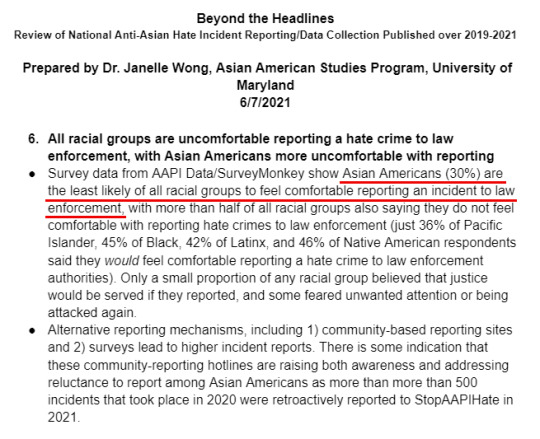
AAPI victims worry about drawing attention to themselves in reporting hate incidents, so they may feel pressured to rush through restorative justice procedures or acquiesce to whatever is proposed, regardless of whether they agree. This defeats the purpose of empowering them.
Also, national hate crime stats show 75% of perpetrators of anti-Asian hate crimes are white, 25% non-white. So why is restorative justice, an approach meant to protect POC from disproportionate levels of judicial punishment, being applied in a one-size-fits-all approach?
To understand why this is harmful, let’s consider the Atlanta shooter. The AAPI community had to fight loudly to overcome the racist narrative that he had a sex addiction and “had a bad day.” According to Stop AAPI Hate, should we drop all charges and just get him in a classroom?
Overall, vague restorative justice procedures could end up reinforcing the status quo that already exists: perpetrators don’t face appropriate consequences and AAPI victims are disempowered. AAPI deserve full transparency on what restorative justice looks like—upfront.
This doesn’t mean Stop AAPI Hate’s work is useless. But the severe de-prioritization of Asian men raises red flags on what the organization’s purpose is and how much bias is corrupting its work. It means that Asian men are being double victimized—and by our own community no less.
So until Stop AAPI Hate publicly acknowledges the harm it’s caused in its erasure of Asian men, improves its methodology and analysis, and centers victims completely, it shouldn’t be relied on as a primary data source to shape the media narrative about anti-Asian hate crimes.
In this post, I focused mostly on the data and analysis of anti-Asian hate crimes, and Stop AAPI Hate’s role as a primary source. In my next post, I’ll focus on journalism and the mainstream media messaging about anti-Asian hate crimes that gets produced from this data.
(Please don’t repost or edit my art. Reblogs are always appreciated.)
If you enjoy my work, please pledge to Patreon or donate to Paypal. I lost my publisher for trying to publish these kinds of essays, so your support keeps me going until I can find a new publisher/lit agent
https://twitter.com/Joshua_Luna/status/1134522555744866304
https://www.patreon.com/joshualuna
https://www.paypal.com/paypalme2/JoshuaLunaComics
Post link

